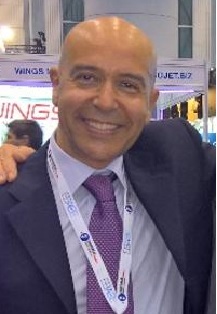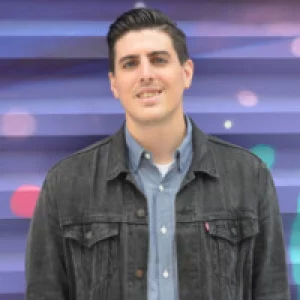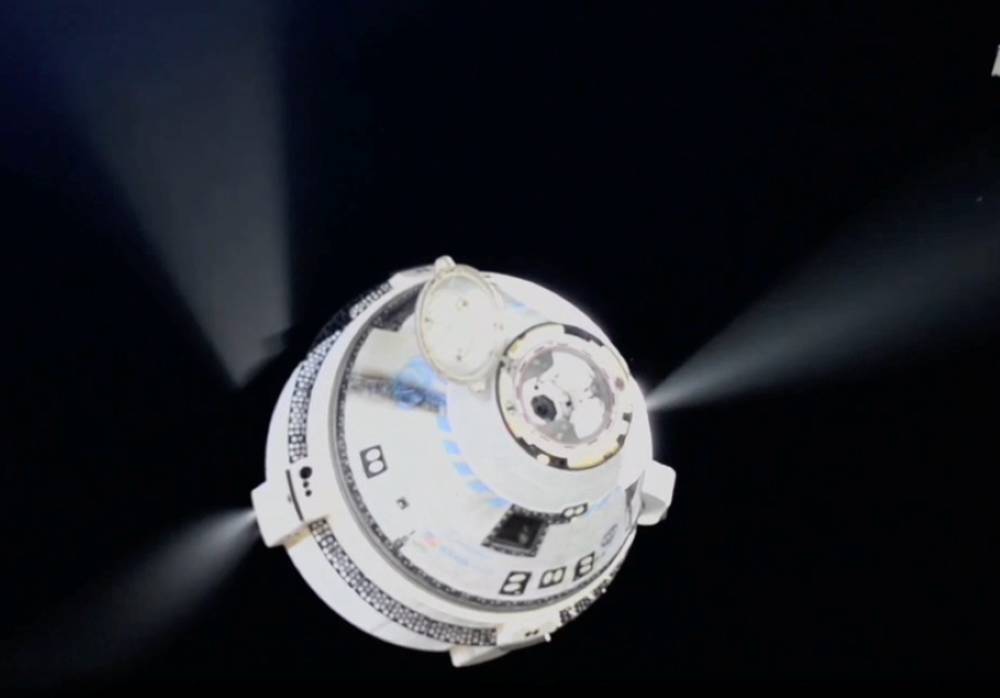Starliner Makes Safe Landing In New Mexico
Details
More Products & Services
Products & Services
Home - Aviation Group Marketing
Aviation Week Network
120 data points on over 156,000 commercial and business aviation aircraft, including military transports. Discover the most trustworthy resource for the complete aircraft history, plus ad hoc reports, month-over-month trend analysis and details on expected deliveries through 2050.
Aerospace | Aviation Week Network
Aviation Week Network
https://aviationweek.com/themes/custom/particle/dist/app-drupal/assets/awn-logo.svg
People

Andrea Rossi Prudente
Aviation Week Network

Becca Balmes
Aviation Week Network

Belinda Tan
Aviation Week Network

Brian Everstine
Aviation Week Network
Editor

Eddie Krankowski
Aviation Week Network
Assistant Manager, Tradeshows

erving dockery
Aviation Week Network

Lisa Tan
Aviation Week Network
Senior Marketing Manager

Mark Thomas
Aviation Week Network
Description
CAPE CANAVERAL/HOUSTON—Three months after reaching the International Space Station (ISS) for what was expected to be a short flight test before entering service, Boeing's CST-100 Starliner spacecraft returned to Earth without its crew due to NASA safety concerns over the ship's propulsion system.
After weeks of tests, analysis and debate, NASA pulled veteran astronauts Barry “Butch” Wilmore and Sunita Williams from the Starliner Crew Flight Test (CFT) and reassigned them to serve aboard the ISS until a SpaceX capsule is available to bring them home in six months.
The astronauts watched as Starliner departed the station at 6:04 p.m. EDT Sept. 6, marking the end of their roles as Starliner test pilots. “She's on her way home,” Williams radioed to ground control teams as the ship, named Calypso, passed beyond the station's safety zone.
Starliner's journey back to Earth began with the opening of 12 hooks latching the spacecraft to the forward port of the Harmony module. That allowed springs on Starliner's docking ring to push the spacecraft away from the station as it sailed 260 mi. over central China.
At a distance of 16 ft., Starliner fired a pair of Reaction Control System (RCS) thrusters to pick up speed, setting the stage for a series of 12 short burns over the next 5 min. to maneuver the spacecraft forward and above the ISS. The so-called “breakout burn” was designed to minimize the number of thruster burns and get the vehicle away from the station about twice as fast as what was previously planned with crew onboard.
Unlike Starliner's June 6 approach to the ISS, the thrusters operated flawlessly during the departure maneuvers, as Boeing predicted. Two tests while Starliner was still docked at the ISS and additional ground tests all showed the thrusters would operate as planned. But NASA remained concerned that Boeing's computer modeling did not capture all the potential thruster failure modes and decided to discontinue the crewed portion of CFT on Aug. 24. How Starliner's crewless return will impact plans to certify the system for astronaut ferry flights to the ISS has yet to be determined.
Starliner circled the planet in free drift four times and then ignited four orbital maneuvering and attitude control (OMAC) system thrusters at 11:17 p.m. to drop out of orbit. The 59-sec. burn slowed Starliner by 426 ft. per second, setting up a southwest-to-northeast trajectory over the Pacific Ocean, Mexico's Baja Peninsula, the Gulf of California, northern Mexico and finally New Mexico for a landing at NASA's White Sands Space Harbor.
During a final test before leaving orbit, 10 of Starliner's 28 RCS thrusters on the soon-to-be discarded service module were fired, all successfully. Another 12 RCS thrusters on the returning crew module were also tested, with one failing to fire as commanded. The slight loss of redundancy was not expected to impact Starliner's reentry and landing.
The service module was released as planned at 11:20 p.m. for a destructive reentry into the atmosphere.
At an altitude of about 24,500 ft., two small drogue parachutes unfurled to slow Starliner's descent and stabilize the ship. At about 8,000 ft., a trio of pilot parachutes deployed to pull out Starliner's three 104-ft.-dia. main parachutes, slowing Starliner's speed to about 18 mph. About 2,500 ft. above the ground, airbags inflated to mitigate the force of the landing impact. Touchdown occurred at 12:01 a.m. EDT Sept. 7 (10:01 p.m. Sept. 6 local time) to bring the three-month CFT mission to a close.
The extra time in orbit gave Boeing a head start on work that will be needed before Starliner flies again. In addition to issues with five RCS jets during the spacecraft's approach to the ISS, Starliner's propulsion system experienced a series of helium leaks. Boeing concluded the leaks were due to a slight degradation of seals that had been exposed to corrosive propellants.
Despite the leaks, Starliner left the ISS with 10 times more helium than what was needed for the return trip to Earth. Helium is used to pressurize Starliner's RCS and OMAC thrusters.
“One of the things we're looking at is a different material on the seal, and maybe a different, slightly enlarged seal so that we can solve the issue with the helium leaks,” Steve Stich, NASA's Commercial Crew Program manager, told reporters during a prelanding news conference.
As for the troubled thrusters, engineers suspect Starliner's flight computer sidelined five jets during the vehicle's approach to the ISS due to overheating following a manual flying test that caused the thrusters to fire hundreds of times in quick succession while in direct sunlight.
That is believed to have caused Teflon seals in the jets' poppet valves to temporarily swell, restricting the flow of fuel. Tests showed the jets later worked normally, indicating the seals had returned to normal, or near-normal, shape.
“We need to understand what kinds of pulses caused that swelling ... and what temperatures the thruster gets to,” said Stich. “Then, how do we tell the vehicle not to fire the thruster in that manner to cause the extra heating.”
Boeing and NASA initially decided to eliminate manual flying during Starliner's piloted return trip home. However, faced with dissenting opinions by some of its engineering and safety oversight personnel, the agency ultimately opted for an uncrewed return.
“Many parts of the flight went extremely well, and Starliner is a great spacecraft,” Stich said. “What we really need to go do is look at the things that didn't perform the way we expected.
“We've learned a lot on this test flight,” he added. “It's been a journey to get here, and we're excited to have Starliner return.”
Following servicing at White Sands, the spacecraft was due to be transported back to Boeing's processing facility at Kennedy Space Center.
After weeks of tests, analysis and debate, NASA pulled veteran astronauts Barry “Butch” Wilmore and Sunita Williams from the Starliner Crew Flight Test (CFT) and reassigned them to serve aboard the ISS until a SpaceX capsule is available to bring them home in six months.
The astronauts watched as Starliner departed the station at 6:04 p.m. EDT Sept. 6, marking the end of their roles as Starliner test pilots. “She's on her way home,” Williams radioed to ground control teams as the ship, named Calypso, passed beyond the station's safety zone.
Starliner's journey back to Earth began with the opening of 12 hooks latching the spacecraft to the forward port of the Harmony module. That allowed springs on Starliner's docking ring to push the spacecraft away from the station as it sailed 260 mi. over central China.
At a distance of 16 ft., Starliner fired a pair of Reaction Control System (RCS) thrusters to pick up speed, setting the stage for a series of 12 short burns over the next 5 min. to maneuver the spacecraft forward and above the ISS. The so-called “breakout burn” was designed to minimize the number of thruster burns and get the vehicle away from the station about twice as fast as what was previously planned with crew onboard.
Unlike Starliner's June 6 approach to the ISS, the thrusters operated flawlessly during the departure maneuvers, as Boeing predicted. Two tests while Starliner was still docked at the ISS and additional ground tests all showed the thrusters would operate as planned. But NASA remained concerned that Boeing's computer modeling did not capture all the potential thruster failure modes and decided to discontinue the crewed portion of CFT on Aug. 24. How Starliner's crewless return will impact plans to certify the system for astronaut ferry flights to the ISS has yet to be determined.
Starliner circled the planet in free drift four times and then ignited four orbital maneuvering and attitude control (OMAC) system thrusters at 11:17 p.m. to drop out of orbit. The 59-sec. burn slowed Starliner by 426 ft. per second, setting up a southwest-to-northeast trajectory over the Pacific Ocean, Mexico's Baja Peninsula, the Gulf of California, northern Mexico and finally New Mexico for a landing at NASA's White Sands Space Harbor.
During a final test before leaving orbit, 10 of Starliner's 28 RCS thrusters on the soon-to-be discarded service module were fired, all successfully. Another 12 RCS thrusters on the returning crew module were also tested, with one failing to fire as commanded. The slight loss of redundancy was not expected to impact Starliner's reentry and landing.
The service module was released as planned at 11:20 p.m. for a destructive reentry into the atmosphere.
At an altitude of about 24,500 ft., two small drogue parachutes unfurled to slow Starliner's descent and stabilize the ship. At about 8,000 ft., a trio of pilot parachutes deployed to pull out Starliner's three 104-ft.-dia. main parachutes, slowing Starliner's speed to about 18 mph. About 2,500 ft. above the ground, airbags inflated to mitigate the force of the landing impact. Touchdown occurred at 12:01 a.m. EDT Sept. 7 (10:01 p.m. Sept. 6 local time) to bring the three-month CFT mission to a close.
The extra time in orbit gave Boeing a head start on work that will be needed before Starliner flies again. In addition to issues with five RCS jets during the spacecraft's approach to the ISS, Starliner's propulsion system experienced a series of helium leaks. Boeing concluded the leaks were due to a slight degradation of seals that had been exposed to corrosive propellants.
Despite the leaks, Starliner left the ISS with 10 times more helium than what was needed for the return trip to Earth. Helium is used to pressurize Starliner's RCS and OMAC thrusters.
“One of the things we're looking at is a different material on the seal, and maybe a different, slightly enlarged seal so that we can solve the issue with the helium leaks,” Steve Stich, NASA's Commercial Crew Program manager, told reporters during a prelanding news conference.
As for the troubled thrusters, engineers suspect Starliner's flight computer sidelined five jets during the vehicle's approach to the ISS due to overheating following a manual flying test that caused the thrusters to fire hundreds of times in quick succession while in direct sunlight.
That is believed to have caused Teflon seals in the jets' poppet valves to temporarily swell, restricting the flow of fuel. Tests showed the jets later worked normally, indicating the seals had returned to normal, or near-normal, shape.
“We need to understand what kinds of pulses caused that swelling ... and what temperatures the thruster gets to,” said Stich. “Then, how do we tell the vehicle not to fire the thruster in that manner to cause the extra heating.”
Boeing and NASA initially decided to eliminate manual flying during Starliner's piloted return trip home. However, faced with dissenting opinions by some of its engineering and safety oversight personnel, the agency ultimately opted for an uncrewed return.
“Many parts of the flight went extremely well, and Starliner is a great spacecraft,” Stich said. “What we really need to go do is look at the things that didn't perform the way we expected.
“We've learned a lot on this test flight,” he added. “It's been a journey to get here, and we're excited to have Starliner return.”
Following servicing at White Sands, the spacecraft was due to be transported back to Boeing's processing facility at Kennedy Space Center.

Share
Recent Chats
Share via email
Future: handle WhatsApp here
Future: handle LinkedIn here
Future: handle Twitter here
SUBMENU HERE
Share via Chat
Copy Link

 Digital Directory
Digital Directory